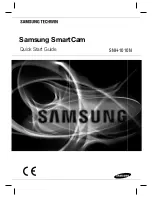
MAX II
Bolt Tension Monitor
57
8.4 Auto Zero/Calibration
The auto calibration feature uses a single calibration bar and two multiples (echo-
echo mode) of the calibration bar to perform an automatic
Two-Point
calibration. If a
3” calibration bar is used, it would measure at 3”, and then again on the second
multiple at 6”. This zero option will typically be the preferred option, as it’s the easiest
option to use and for the most part is automatic in terms of operation. However,
depending on signal quality and calibration standard used, may not always work. If
valid signals cannot be acquired during the auto set routine, the
MAX II
will report
“Can’t find stable echo”. Before eliminating this option altogether and using one of
the manual options listed below, try relocating the transducer to various positions on
the end of the calibration standard first. Since the calibration standards are
cylindrical, they can sometimes create substantial sidewall noise, based on the the
length, transducer size, and frequency. Moving the transducer to the edge of the
cylinder will often times eliminate the noise by shooting down the edge of the
standard and allowing the
MAX II
to acquire a reasonable signal.
Now that the bolt group
CAL DATA
has been created in the previous section, we’re
ready to get started with the automatic zero/calibration process. The first thing to
note is the procedures in this section demonstrate a
Two-Point
calibration, but a very
fast and efficient one, with minimal adjustments required from the operator.
Measuring Calibration Standard – For the First Time
1) Press the
MENU
key multiple times to tab right and the
ESC
key multiple
times to tab left until the
CAL
menu is highlighted and displaying the
submenu items. Alternatively, press the
LEFT
and
RIGHT
arrow keys
multiple times using the left button wheel.
Summary of Contents for MAX II
Page 2: ......
Page 7: ......
Page 8: ......
Page 54: ...Dakota Ultrasonics 46 Figure 6 Reflection in a bending bolt ...
Page 215: ......














































